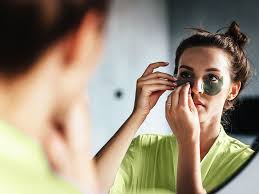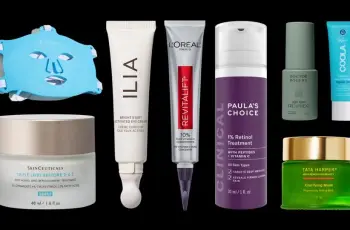
Dark Circles Under the Eyes: Causes and Treatment Options
Dark circles under the eyes are a common concern, with many people seeking solutions to help them appear more refreshed and less fatigued.
This issue can make individuals look older or unhealthy, often leading to self-consciousness.
As a dermatologist, I frequently encounter patients worried about these unsightly shadows or discoloration.
Known medically as periorbital hyperpigmentation (POH), dark circles can occur for various reasons.
In this article, we’ll explore what causes POH, the available treatments, and how you can best address this condition.
What Causes Dark Circles?
The causes of dark circles are numerous and can range from lifestyle factors to underlying health conditions.
It’s essential to understand the root cause of your dark circles to determine the most effective treatment.
1. Genetics
Some people inherit predispositions for darker pigmentation under their eyes. This can be due to hereditary traits like the thin skin around the eyes or increased melanin production in the area.
If dark circles run in your family, you’re more likely to develop them yourself.
2. Fatigue
One of the most well-known triggers for dark circles is fatigue. When you’re tired, the skin around your eyes becomes paler, allowing blood vessels and underlying structures to become more visible.
This often results in the dark, shadowy appearance beneath your eyes.
3. Sun Exposure
Excessive sun exposure leads to the production of melanin, the pigment responsible for skin color. Prolonged UV exposure can cause the skin under the eyes to darken.
Melanocytes, which are the cells responsible for producing melanin, increase their activity when exposed to the sun, worsening dark circles over time.
4. Aging
As we age, our skin loses collagen and elasticity, making the skin thinner. This thinning skin allows the blood vessels beneath the eyes to show through more prominently, creating a darkened appearance.
Furthermore, the loss of fat and volume around the eyes contributes to shadows and puffiness.
5. Allergies
Allergic reactions can cause inflammation and congestion in the blood vessels around the eyes, which leads to dark shadows.
Allergic shiners, a term for dark circles caused by allergies, often result from repeated eye rubbing and nasal congestion, which worsens the darkness under the eyes.
6. Inflammation
Chronic inflammation can cause pigmentation changes in the skin, making dark circles worse. Inflammatory conditions like eczema or dermatitis around the eyes are often associated with POH. Additionally, skin irritation from frequent rubbing or scratching can exacerbate the darkening of the skin.
Treatments for Dark Circles
Several treatments can reduce the appearance of dark circles. These treatments range from topical creams and serums to cosmetic procedures and lifestyle changes.
Here’s a breakdown of the most effective treatment options.
1. Topical Creams and Serums
The most common and non-invasive way to treat dark circles is by using specialized eye creams or serums. These products typically target two primary issues: pigmentation and inflammation.
Skin Lightening Ingredients: Certain ingredients can help reduce pigmentation under the eyes, such as azelaic acid, cysteamine, kojic acid, niacinamide, and retinol.
Niacinamide, for example, is excellent for calming inflammation and preventing further pigmentation.
Antioxidants and Anti-inflammatories: Ingredients like Vitamin C, retinol, and Vitamin K help lighten the skin and improve skin tone.
Vitamin K is particularly useful in reducing the appearance of blood vessels under the eyes, while retinol can help boost collagen production and strengthen the skin.
Some of the most popular products for dark circles include:
Replenix Brightening Eye Cream: This eye cream contains hydrating agents like hyaluronic acid and sodium PCA, as well as anti-aging ingredients like retinol and peptides.
Its lightening ingredients include Vitamin C and Vitamin K, making it an excellent choice for improving the appearance of dark circles.
Sente Illumine Eye Cream: This cream is the only one with heparan sulfate, which helps moisturize and repair skin. It also includes niacinamide to reduce pigmentation and peptides to smooth out fine lines.
2. Caffeine-Based Eye Treatments
Caffeine is an excellent ingredient for reducing the appearance of dark circles. It is a vasoconstrictor, which means it can narrow blood vessels and reduce the dark shadows caused by dilated veins.
Caffeine also helps improve microcirculation, which can reduce puffiness.
Some of the top caffeine-infused eye creams include:
ISDIN Isdinceutics Vital Eyes: This eye cream targets dark circles and puffiness while also providing soothing hydration.
It contains licorice extract and caffeine, both of which help address inflammation and dark shadows.
La Roche-Posay Pigmentclar Eyes: This eye cream combines niacinamide, caffeine, and ferulic acid, making it an excellent option for treating dark circles caused by both pigmentation and blood vessel issues.
3. Hyaluronic Acid and Humectants
Hyaluronic acid is a key ingredient in many eye creams because it can help plump the skin and improve its ability to retain moisture.
By drawing moisture into the skin, it helps create a smoother, more radiant appearance. Hyaluronic acid is especially helpful for people with dry skin or aging skin.
Replenix Brightening Eye Cream contains glycerin and sodium PCA, which are effective humectants that attract water to the skin.
Sente Illumine Eye Cream also has hyaluronic acid and is especially useful for people with dry skin around their eyes.
4. Eye Masks and Patches
Eye masks and patches are another option for treating dark circles. These products use occlusion, which means they help lock in moisture and other beneficial ingredients to improve absorption.
Patches can help boost the effectiveness of the ingredients in your eye creams by providing a barrier to enhance penetration.
5. Sunscreen for the Eye Area
Sunscreen is crucial for preventing further darkening of the under-eye area. UV exposure can exacerbate the production of melanin, which leads to increased pigmentation.
Applying a broad-spectrum sunscreen specifically formulated for the eye area helps protect this delicate skin from further damage.
Neocutis Lumiere Firm Illuminating & Tightening Eye Cream is a great option, as it provides both sun protection and brightening benefits to help reduce dark circles.
For additional protection, you can also use tinted eye sunscreens, which not only shield the skin from UV rays but also provide extra coverage to conceal dark circles.
Cosmetic Procedures for Dark Circles
In some cases, more advanced treatments may be required to address stubborn dark circles. Cosmetic procedures can provide dramatic results, but they come with higher costs and risks.
1. Chemical Peels
Chemical peels use acid solutions to exfoliate the skin and remove pigmented layers.
Salicylic and lactic acid peels are common for addressing dark circles, as they help to lighten the skin while stimulating collagen production.
However, these peels should be used cautiously in people with darker skin tones to avoid post-inflammatory hyperpigmentation.
2. Laser Treatments
Laser treatments target both the vascular and pigmentation issues that cause dark circles. Vascular lasers target blood vessels, while pigment-targeting lasers focus on melanin.
Multiple sessions are typically required to achieve significant improvement.
3. Dermal Fillers and PRP
If the dark circles are due to hollowness or tear troughs, dermal fillers can help restore volume. Platelet-Rich Plasma (PRP) therapy also stimulates collagen production to improve skin texture and thickness.
These procedures generally provide long-lasting results but require periodic touch-ups.
4. Blepharoplasty (Eyelid Surgery)
In severe cases, surgery may be an option. Blepharoplasty, or eyelid surgery, involves removing or repositioning excess skin and fat around the eyes.
This procedure is ideal for individuals with anatomical issues such as loose skin or fat bulges that contribute to dark circles.
Lifestyle and Home Remedies
In addition to topical treatments and cosmetic procedures, there are lifestyle changes you can make to help reduce dark circles.
Get Enough Sleep: Ensure you’re getting 7–9 hours of quality sleep each night to reduce fatigue-related dark circles.
Hydrate: Drink plenty of water to keep your skin and body hydrated, which can help reduce puffiness and dark shadows.
Avoid Allergens: If you suffer from allergies, try to minimize exposure to allergens and avoid rubbing your eyes, which can worsen dark circles.
Conclusion
Dark circles are a common issue with many potential causes. Fortunately, a variety of treatments, from topical creams to cosmetic procedures, can help improve the appearance of this condition.
Understanding the root cause of your dark circles is key to selecting the right treatment.
Whether you opt for skincare products, professional treatments, or simple lifestyle changes, with proper care, you can achieve a more youthful, refreshed look.
By taking a personalized approach to your skincare routine and being consistent with treatments, most individuals can see significant improvements in the appearance of their dark circles.


